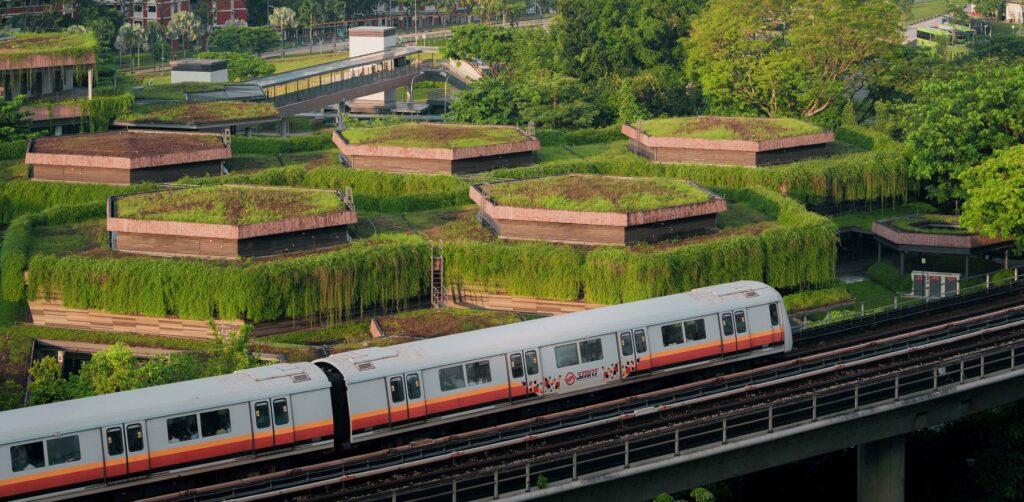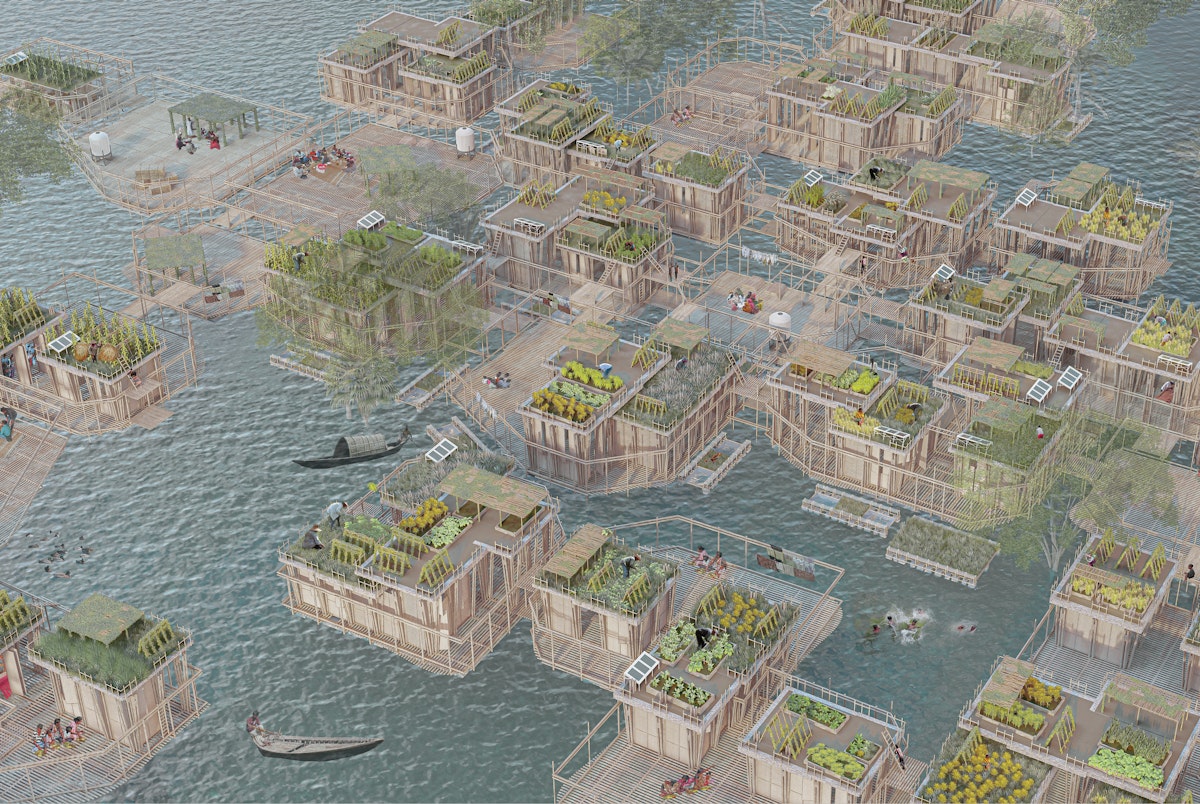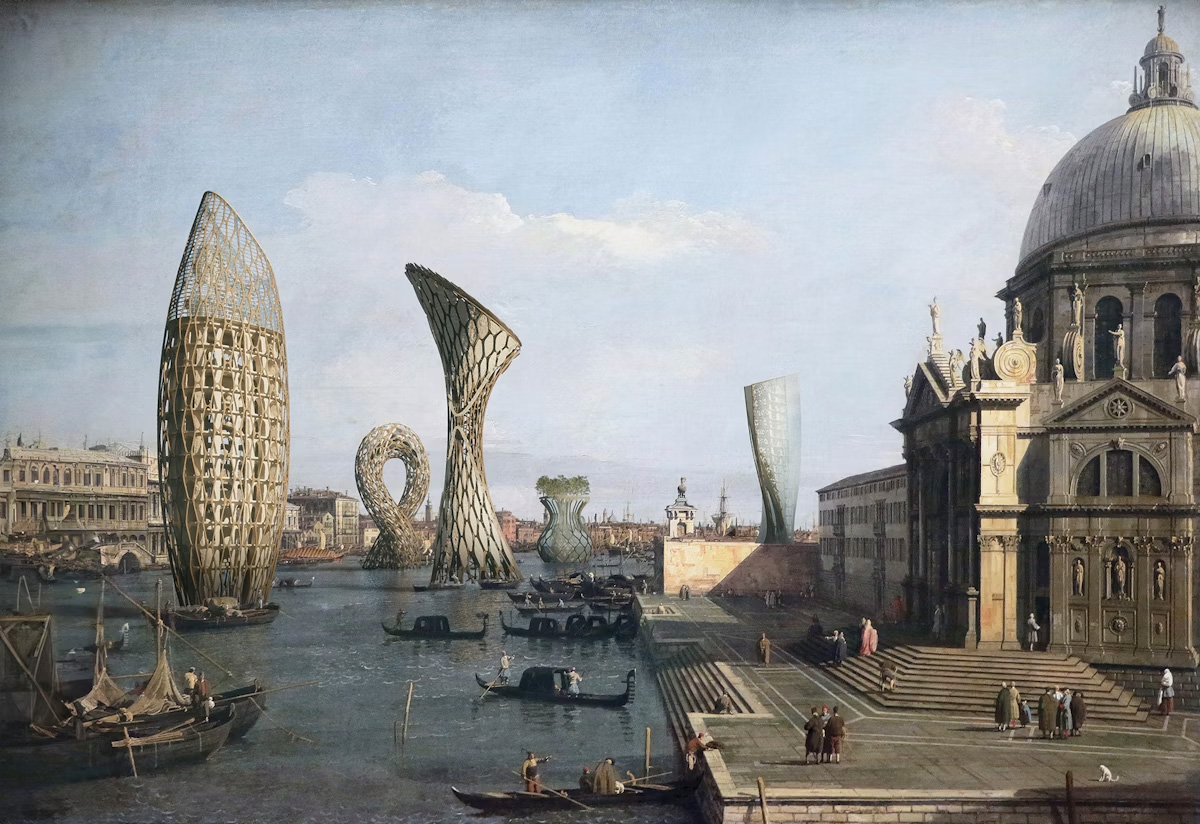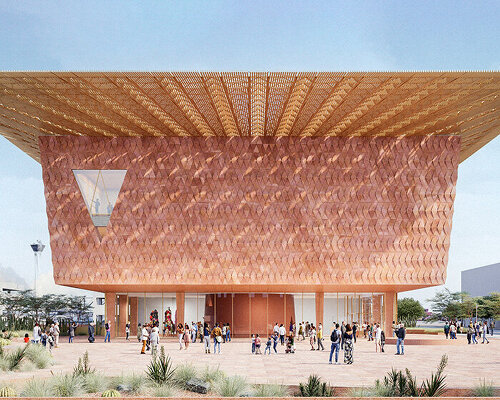Memorial for lost buildings among projects from Birmingham School of Architecture and Design students


Dezeen School Shows: a memorial that pays homage to destroyed and abandoned buildings in Birmingham, UK, is among the architecture projects from students at Birmingham School of Architecture and Design.
Also featured is a community-led gaming arcade and a street art archive that reimagines part of Birmingham as a "living canvas".
Birmingham School of Architecture and Design
Institution: Birmingham City University
School: Birmingham School of Architecture and Design
Course: BA (Hons) Architecture
Tutors: Robert Annable, Oliver Chapman, Dr Yazid Khemri, Virginia Polignano, Paul Beatty-Pownall, Dr Hocine Bougdah, Dr Sana Malik, Ian Shepherd, Emma Widdop, Max Wisotsky and Dr Jieling Xiao
School statement:
"The BA Architecture programme at Birmingham City University continues to build upon the storied history of the Birmingham School of Architecture and Design, established in 1908. We are strongly engaged and embedded within our city and region, working with and for the city and its communities – imagining the future of our local places, empowering positive change from above and below.
"We believe that design has the power to create transformational change and we empower our students to generate ideas and actions to radically change the way we live, now and into the future.
"Every student is encouraged to develop their own design attitude, base on their own diverse lived experiences and to take a critical stance on contemporary issues such as the climate and biodiversity crisis, spatial justice and the right to the city.
"We are honoured to be creating ethical, entrepreneurial and forward-thinking designers capable of stepping into practice, ready to rise to 21st century challenges.
"In response to the 2023 bankruptcy of Birmingham City Council and the unprecedented financial challenges and austerity measures put in place to overcome them, students this year were asked to explore the overarching theme of architecture 'beyond austerity'.
"With care, rigour and filled with hope, students this year have explored various urban and architectural approaches to envision a scenario for the future of the neighbourhoods of Birmingham.
"The work shown here, just a small sample of a wide-range of the thoughtful and provoking projects produced, explores the communities that many of our students are from or can relate closely to.
"They are imagining their own future as much as the city's. From playful responses to adaptive reuse, to innovative material explorations, to projects that challenge the status quo of politics, consumption and environmental policy, the students are blazing a trail for a Birmingham of the future.
"We can't wait to let these passionate, caring and thoughtful designers loose on the world."

Back in Business by Rosie Bissell
"Back in Business is a community-led architectural intervention that aims to revitalise Stirchley High Street by celebrating its unique identity and supporting local makers and independent businesses.
"Building upon the semester one project, 'Metro-Morph', the proposal draws inspiration from Stirchley's layered character, incorporating references to nearby landmarks and the rhythm of alleyways.
"The design features a striking diamond-cut stone facade with a cantilevered form that encourages curiosity, while internal courtyards and arcade-like passages invite people to wander, pause and engage with the space.
"The scheme includes a bakery, brewery, workshops and exhibition spaces, combining traditional craftsmanship with elements of high-tech architecture to reflect the evolving nature of making and working.
"Passive strategies such as stack ventilation, solar shading and daylighting improve sustainability and comfort. Material choices and detailing are rooted in the local context, with a focus on durability, tactility and adaptability.
"By promoting visibility of craft, fostering collaboration and offering flexible, accessible spaces, Back in Business helps re-energise a declining high street and reinforces Stirchley's community-focused spirit."
Student: Rosie Bissell
Course: BA (Hons) Architecture

From Waste to Worth by Sakinah Bouterse
"The project proposes a community upcycling studio at Lifford Reservoir – a site identified as a liminal space due to its transitional nature between residential and industrial zones.
"The ambiguity inherent in this in-between state allows for unconventional behaviours to emerge. however, it also contributes to the site's neglect, antisocial behaviour and environmental degradation, particularly as a result of fly-tipping and unmanaged waste.
"Informed by Jan Gehl's theory of 'lively and lifeless', the project aspires to reinvigorate the site by transforming it from a disregarded state into a lively environment that prioritises human design.
"The upcycling studio introduces a circular reuse system, whereby salvaged and discarded materials from the site are reclaimed and repurposed into functional artefacts and bespoke objects. These creations accommodate the 'loose' activities already present around Lifford Reservoir, without imposing a predetermined or prescriptive programme.
"A fundamental initiative of the scheme is to challenge the culture of consumerism, instead advocating for an inclusive, cost-free facility that ensures equitable access to creative resources, particularly in periods of economic austerity.
"It also challenges the notion that waste is inherently useless, exhibiting how materials can be given a second life through inventiveness rather than being seen as disposable."
Student: Sakinah Bouterse
Course: BA (Hons) Architecture

Artist on the Roof by Vaishnvi Rajput
"By creating a building which not only set a new environmental standard for North Edgbaston but also invests in the local community, the Artist on the Roof aims to reignite the maker culture back into area.
"Beside the canal edge and Icknield Port Road, the centre will have three workshops (messy, clean and in between), along with four overlooking artist residences above, with private reflection spaces.
"The balance between work life as well as community engagement has been accommodated to with free-flowing workshops with limited boundaries allowing activities to bleed into one another in the inner exhibition space.
"This space is covered by a large spanning timber grid that illuminates the area throughout the day encouraging collaborative working and allowing this collaboration to become an exhibit in itself.
"Thoughtfully, the structure is based of CLT accompanied with standing seam steel and a brick rainscreen facade, which can be prefabricated and reused in the future.
"The main goal of this project was to design for the people, which is why by using Christopher Alexander's Pattern Language, the people of North Edgbaston have the 'artists language' where they bring the building to life and inhabit and adapt the centre to their needs accordingly."
Student: Vaishnvi Rajput
Course: BA (Hons) Architecture

Urban Refuge Marketplace by Maria Andrukonis
"The Urban Refuge Marketplace proposes a community-driven and sustainable market space in Kings Heath, addressing the displacement of independent businesses and the environmental degradation of the high street.
"At the heart of the design is a pedestrian-orientated urban shortcut, guiding users through the biophilic courtyard, offering a pause point and reconnection with nature within the densely built environment.
"Openings towards the shortcut from the markets form a 'pedestrian drive-through' concept, creating an experience through the journey of the shortcut.
"The east facade consists of a modular terracotta 'pixel' element, which open via a gas strut mechanism, spilling the market programme into the public realm and activating the pavement edge.
"The cafe and permanent shopfront are supplied by an integrated hydroponic greenhouse, reinforcing transparent, healthy and self-sufficient food production, which is particularly important in light of austerity measures.
"Rainwater harvesting for hydroponics, on-site composting and the use of sustainable materials such as CLT, cork and terracotta respond to the project's circular, low-impact ethos.
"Overall, the scheme creates a resilient urban refuge/sanctuary that restores local markets, strengthens social infrastructure, and promotes environmental and community wellbeing."
Student: Maria Andrukonis
Course: BA (Hons) Architecture

The Forgotten and Found by Saima Begum
"The Forgotten and Found project seeks to rejuvenate the Kings Heath neighbourhood by reactivating its neglected and overlooked spaces along the high street.
"Central to this initiative is The Token Fair – a community-led gaming arcade designed to transform the disused alleyways and in-between spaces that weave through the area.
"Once viewed as unsafe and uninviting, these alleyways carried a stigma of neglect. By retrofitting an abandoned warehouse at the end of Kings Court, the project brings familiarity and warmth back to the site, reimagining these forgotten paths as vibrant connectors within the urban fabric.
"Through public engagement, The Token Fair restores a sense of purpose to these passageways, replacing fear with curiosity and creating a new social energy within the neighbourhood.
"The arcade not only offers a playful public space but also harnesses sustainable energy-harvesting technology through kinetic floor tiles, which generate and store energy to power the building's lighting systems after dark, improving Kings Heath's night life.
"Ultimately, the project invites locals to rediscover Kings Heath with renewed excitement and collective pride. Where the forgotten is then found by its users."
Student: Saima Begum
Course: BA (Hons) Architecture

City as a Canvas: The Palimpsest by Lauren McKenzie
"The Palimpsest is a street art archive, factory and workshop that reimagines Kings Heath as a living canvas where local identity is built through continual renewal.
"Salvaged street art walls are removed from sites at risk of government censorship, cleaned and exhibited alongside mementos and personal stories.
"These rotating fragments, displayed across frames that form the building's structure, create a constantly evolving public record of the area's expression.
"As each wall is archived, prefabricated replacements are made in the on-site factory and taught as a skill to residents, empowering the community to regenerate the urban fabric themselves.
"Inspired by the ship of Theseus, the project asks whether a place becomes something new or stays the same when its parts are replaced over time. Here, the answer is both: the building becomes Kings Heath as it builds from it, the 'city' becoming the canvas.
"In the wake of Birmingham's financial strain, The Palimpsest offers a grassroots form of preservation and pride.
"It acts as a spiritual shelter, where the shared act of making and remembering creates emotional connection, revealing how each person loves the place differently and more deeply, than we often realise."
Student: Lauren McKenzie
Course: BA (Hons) Architecture

Work, Live, Play at Lifford by Renia Downes
"Work, Live, Play at Lifford is a housing scheme inspired by Constant's New Babylon and Jane Jacobs' theory of 'eyes on the street.'
"The scheme encourages autonomy, visibility and collective responsibility. It transforms Lifford from a forgotten heterotopia into a vibrant place of self-sufficiency.
"Located in Birmingham, WLPL seeks to reverse the effects of neglect caused by austerity. Low activity levels and reduced natural surveillance around the site have created conditions where antisocial behaviour goes unnoticed.
"The scheme proposes a new circular model for housing and infrastructure: prefabricated pods, elevated on Sitka Spruce post-and-beam frames, are positioned opposite the reservoir to enhance passive surveillance.
"Each pod integrates a daylight tunnel and natural materials to create passive, comfortable living environments that reduce reliance on artificial energy.
"A central recycling centre processes local waste, generating value and employment while reducing the community's environmental footprint.
"With the site's original tennis courts lost, WLPL reintroduces recreation through a raised public walkway, community centre and rooftop playgrounds.
"These elements establish Lifford's renewed identity, rooted in reuse and visibility for the people by the people."
Student: Renia Downes
Course: BA (Hons) Architecture

The Theatre of Politics by Alexander Packham
"The Theatre of Politics is a proposed satellite House of Parliament on the site of the former Lifford waste processing plant, beside Lifford Reservoir.
"It forms part of a wider strategy for polycentric government, aiming to support greater devolution across the UK by giving more space for local voices to be heard.
"The design reuses the site's existing infrastructure, transforming old waste bays into the 'yea' and 'nay' voting lobbies.
"These feature permeable walls, allowing MPs to move between them and encouraging votes based on constituents' needs rather than party lines. This reflects the project's belief that architecture can influence political behaviour.
"Sustainability is key throughout. Materials already on-site are reused, including corrugated metal cladding and crushed bricks and foundations mixed with lime to create a terrazzo-style limecrete. The main chamber is clad in mirrors, offering a civic space that reflects its surroundings and users.
"Gothic revival influences appear in the vertical glulam beams, which echo the form of buttresses. The outer skin, formed from glulam and timber shingles, takes its shape from a moment during a site visit, when plastic bags were seen caught in trees.
"This project combines reuse, symbolism and civic intent to explore how architecture can support a more open, accountable form of democracy."
Student: Alexander Packham
Course: BA (Hons) Architecture

The Beacon by Micheas Ferlito
"A memorial to Birmingham's lost buildings, The Beacon calls all to pay remembrance to significant buildings which were abandoned or destroyed over the years in Birmingham.
"The first site visit to North Edgbaston revealed various dereliction. The same dereliction was also evident on a wider scale throughout Birmingham. This austerity strips away the urban fabric, history and culture of the city.
"The memorial's exhibition halls showcase visual tapes of the lost buildings and their significant events, alongside physical remnants creating an alive and tactile reminder of their history and culture.
"Every aspect of the memorial aims to create a reflective and poetic experience with light, circulation and structure carefully manipulated and exposed to create an air of remembrance and thought.
"This project's concept is that this building could be a blueprint of how to prevent further dereliction from happening. The memorial aims to show the value of the culture and architecture which is taken from a city when a building comes down.
"When this importance is seen by enough people, I hope that it will inspires us to value these buildings and prevent Birmingham from losing other historic sections of its fabric."
Student: Micheas Ferlito
Course: BA (Hons) Architecture

A Wild Agenda by My-Anh Simkiss
"Inviting cities and towns are successful when they facilitate interactions, encouraging us to immerse ourselves to activate the most, if not all, of our senses, leaving a lasting impression.
"Memorable architecture can be narrated for a desired outcome, compelling users to understand the issues, aims and goals that is relevant in our current space and time.
"With a goal to amalgamate the presence of nature into a dense suburban town and reducing the segregation of activity between wildlife and humans – an immersive experience is required to understand the vitality of the local and natural environment that has been slowly encroached upon.
"Decidedly, an aviary aims to provide users with an experiential, contained micro-climate for the purpose of education, arts and restoration on to a suburban high street.
"A complete contradiction to its blocky urban image, to gravitate peoples' attention to issues concerning biodiversity loss and disconnection from the natural world.
"The public space illustrated displays a possibility for a vibrant experience when navigating the urban environment, however, only when nature is interwoven with a building's total scheme."
Student: My-Anh Simkiss
Course: BA (Hons) Architecture
Partnership content
This school show is a partnership between Dezeen and Birmingham University of Architecture and Design. Find out more about Dezeen partnership content here.
The post Memorial for lost buildings among projects from Birmingham School of Architecture and Design students appeared first on Dezeen.



















































